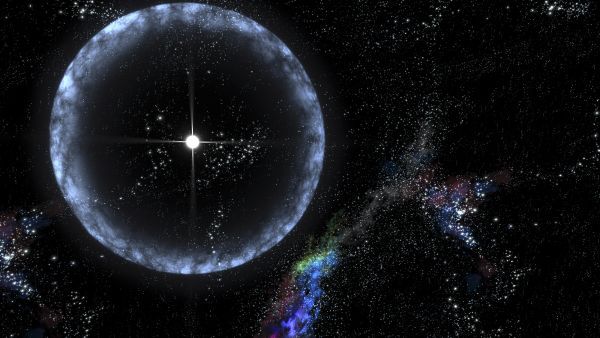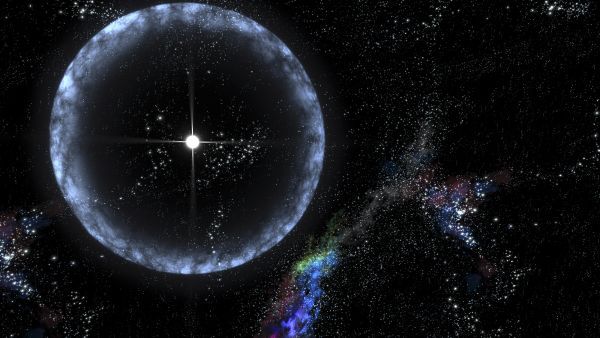
Astronomers have watched a mysterious cosmic object shoot out 1,652 blasts of energy over a short period of time. Though researchers are still stumped as to what caused the repeated eruptions, they hope the observations will help them get closer to an answer.
The entity in question is called a fast radio burst (FRB), an enigmatic phenomenon first observed in 2007. FRBs produce pulses in the radio part of the electromagnetic spectrum; these pulses last only a few thousandths of a second but produce as much energy as the sun does in a year.
Some FRBs emit energy just once, but several — including an object called FRB 121102, located in a dwarf galaxy 3 billion light–years away — are known to repeat their bursts. Using the Five-hundred-meter Aperture Spherical radio Telescope (FAST) in China, a team of scientists decided to conduct an extensive study of this repeating FRB.
Related: 15 unforgettable images of stars
The campaign was meant to just gather routine data about this particular entity, Bing Zhang, an astrophysicist at the University of Nevada, Las Vegas, told Live Science. “Initially, it was just stamp collecting.”
FAST is the world’s most sensitive radio telescope, Zhang added, so it can detect things previous observatories might have missed. Over about 60 hours, the researchers watched FRB 121102 explode 1,652 times, sometimes up to 117 times per hour, far more than any previously known repeating FRB. The team’s results appeared Oct. 13 in the journal Nature.
Most FRBs occur in the distant universe, which makes them difficult to study. But in 2020, astronomers found an FRB inside our Milky Way galaxy, allowing them to determine that the source was a type of dead star called a magnetar.
Magnetars are formed from ultradense stellar corpses known as neutron stars. While all neutron stars have strong magnetic fields, some are outliers with especially intense magnetic fields that can warp their behavior, making them magnetars. Whether all FRBs are magnetars has yet to be determined.
Just how magnetars give rise to FRBs is also unknown. But if FRB 121102 is a magnetar, the data Zhang and his colleagues collected suggest that the quick explosive bursts are happening right on the surface of the star itself, and not in the surrounding gas and dust.
Magnetars’ extreme magnetic fields — trillions of times stronger than Earth’s — can sometimes undergo violent episodes that send out energetic blasts. Astronomers studying FRBs suspect they are detecting radio waves either from this initial explosion or from when such bursts slam into the material surrounding a star, producing powerful shock waves, Zhang said.
RELATED CONTENT
But FRB 121102 sometimes had explosions that happened in quick succession, just a few thousands of a second after one another. That means they couldn’t have come from the surrounding gas and dust, Zhang added. That’s because such interstellar material would need time to heat up, allowing it to fire off radio waves but then also cool down again before it could release another burst, he said. Several thousandths of a second isn’t long enough for this process to occur repeatedly.
“Somehow, this source is very, very good at bursting,” said Victoria Kaspi, an astrophysicist at McGill University in Montreal who studies FRBs but was not involved in the new work. “And it does it as a standard as part of its existence.”
It’s possible that many repeating FRBs are producing huge numbers of outbursts, and it’s only because of FAST’s incredible sensitivity that the team was able to capture so much activity from FRB 121102, she added.
While the data are a mark in favor of the magnetar interpretation of FRBs, they are known to produce such energetic bursts, so the findings are not yet conclusive, Kaspi told Live Science. The magnetar found last year in our galaxy doesn’t emit so many blasts in a short time. But that might be because it’s older, and perhaps more youthful magnetars can match the observations of FRB 121102, she added.
“The question is now for the theorists,” who have to determine if young magnetars are active enough to repeatedly burst in this way, Kaspi said.
Originally published on Live Science.



